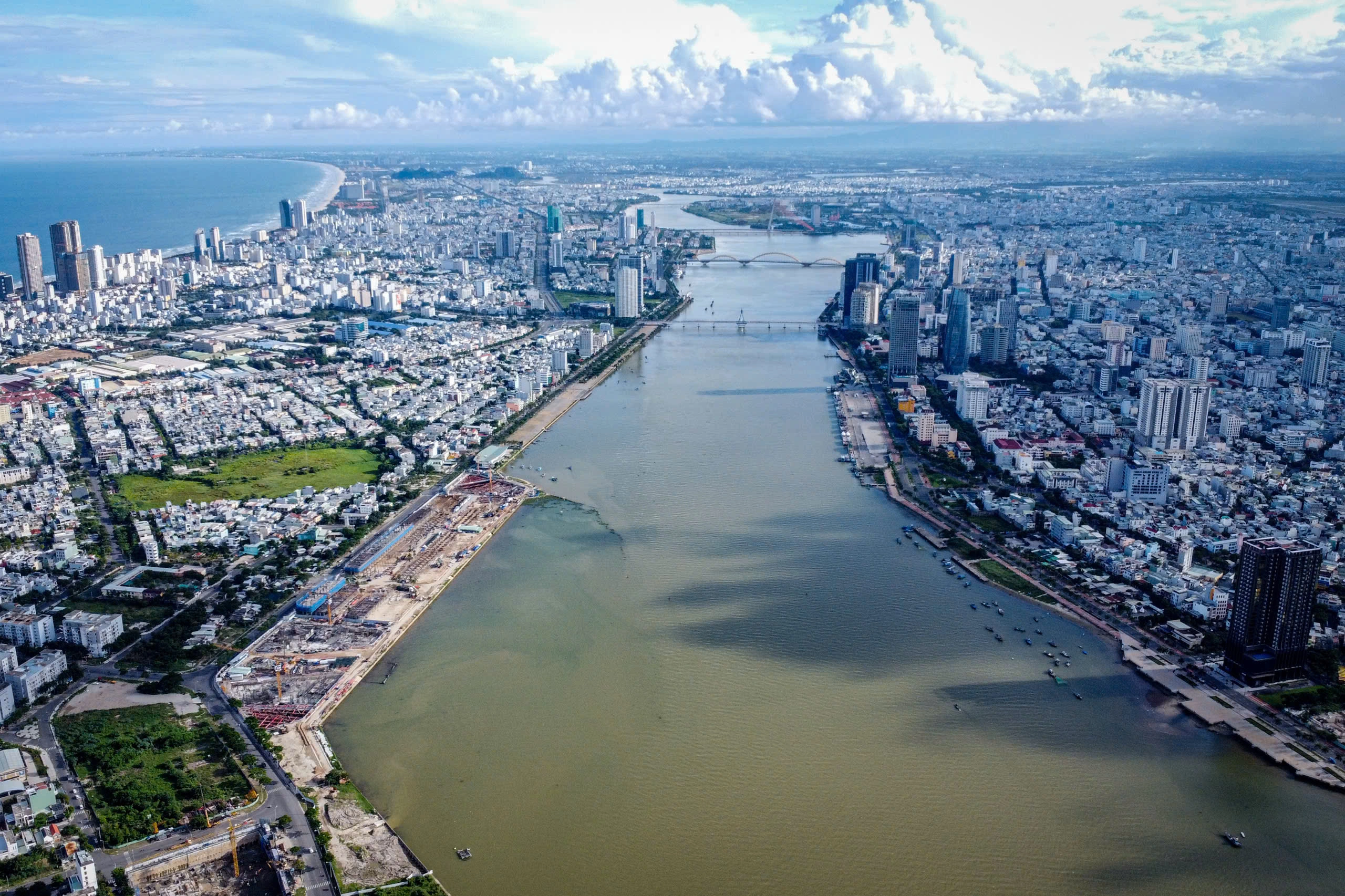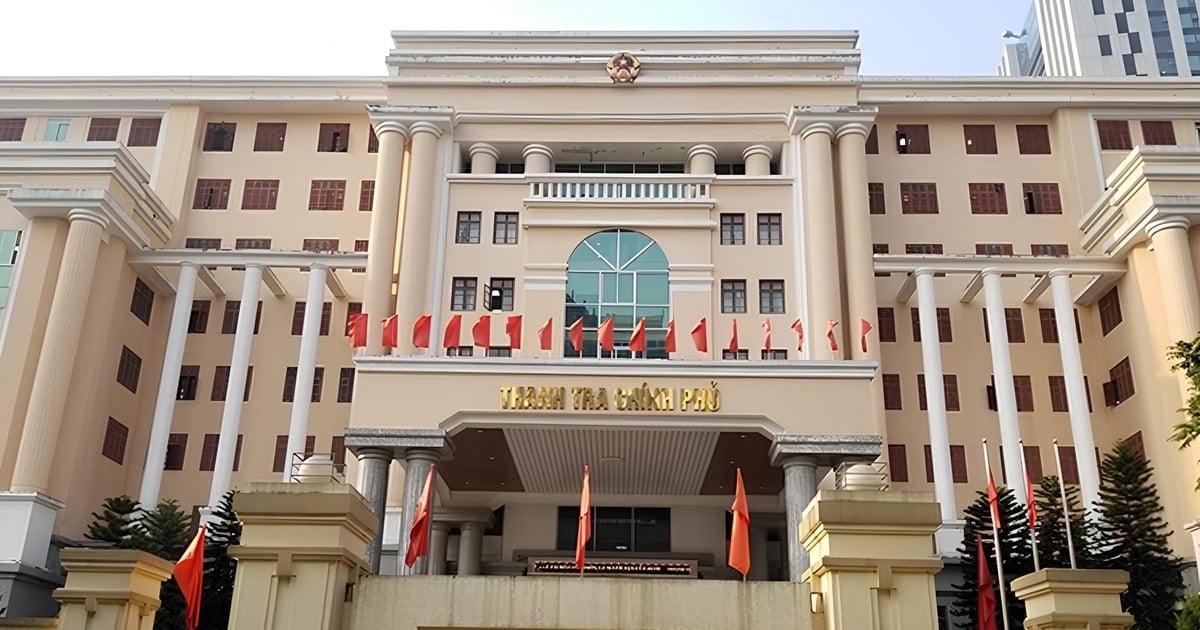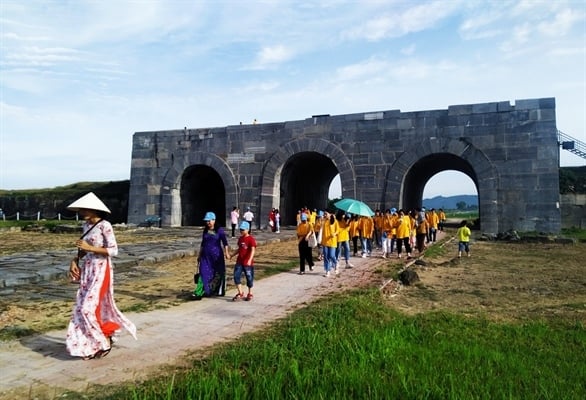Professor Tran Ngoc Duong - Photo: QUANG VINH
The Politburo and the Secretariat have assigned the Government Party Committee to preside over and coordinate with the Central Organizing Committee, the National Assembly Party Committee, and relevant Party committees and organizations to study the orientation for merging a number of provincial-level administrative units.
Along with that, research is oriented to continue to arrange and eliminate intermediate administrative levels (district level).
Speaking to Tuoi Tre Online on the morning of February 20, Professor Tran Ngoc Duong, former deputy head of the National Assembly Office and member of the Presidium of the Central Committee of the Vietnam Fatherland Front, said that merging one province with another does not pose any constitutional problem.
Because the Constitution does not specifically state that Vietnam has 63 provinces and centrally run cities, Article 110 of the 2013 Constitution stipulates that administrative units of Vietnam are divided into provinces and centrally run cities.
It is also reasonable to study removing the district level and only keeping the provincial and commune levels.
"This is a policy that is very suitable for government organizations around the world.
Specifically, they focus on building a strong two-sided government, which is a strong province and strong grassroots (commune, ward).
The intermediate government in the middle (district level) is sent by the provincial government to a certain area or region belonging to a few communes or wards to represent the provincial government in holding the government in that area or base. This is also a progressive and modern government model today," said Professor Duong.
Merging provinces creates momentum and space for strong development
* Currently, Vietnam has 63 provinces and cities, so when researching the merger of some provinces, what direction should be taken to be appropriate, sir?
- I think the Politburo, the Secretariat, and the Central Committee have also done research and there may no longer be 63 provinces and cities, but will orient research to merge some provinces to create regional strengths and better regional connectivity.
However, I do not know or say exactly how many provinces and cities there are, but they will probably be grouped together and possibly even smaller than they are now to create regions with interconnected strengths.
Such as creating a region with both sea, forest and plain - it is possible to merge some coastal provinces with some coastal provinces to create a strong maritime position, forming a region with large strengths.
I think the Politburo and the Central Committee have done research but will have to do it step by step.
* Currently, the merger of administrative units is mainly based on many criteria, but mainly on two criteria: population size and area. So when studying the merger of some provinces, should we consider other criteria to ensure suitable development?
- I think that when studying the merger of some provinces, there must be specific criteria to create consensus as well as strong development momentum.
If there are no criteria and just merge according to subjective wishes, it will not be successful and may even create unreasonable development areas.
Recently, the reality is that the division of administrative units into too small ones has led to conflicts, even competition, and the elimination of each other's development.
Therefore, merging provinces will be an advantage to overcome this situation and create momentum and space for strong development.
If the district level is abolished, it will help the management environment to be open and convenient.
* In your opinion, what are the advantages and disadvantages of abolishing the district level?
- To see how beneficial and harmful this is, we need to continue to research, clarify, and deepen it to implement this policy well because for a long time in local government we have been familiar with the 3-level model (province, district, commune).
But initial thinking shows that if we remove the district level, there will be many advantages. The first advantage will be to create a relatively larger space for economic and social development without being limited to a certain district or county.
At the same time, it creates a broader environment to attract potential and resources for development. That is a huge advantage in the context of increasingly broad economic integration. At that time, there are no barriers by the boundaries and territories of districts, wards, and communes.
Second, attract larger resources from the whole province to serve a project of a commune or ward.
Third, this is in line with the Party's policy of streamlining to reduce intermediary levels, increase the State budget, and reduce costs for the current district and county apparatus.
In addition, in the current conditions of rapid development of science and technology, state management from the province to the grassroots level of communes and wards is much more convenient when information technology develops.
In addition, the intermediate level (district level) will be eliminated and decentralization and delegation of authority will be done directly from the provincial level to the commune and ward levels. This will help the management environment become more open and convenient.
However, this may initially create some obstacles due to inadequate awareness, leading to doubts and concerns about whether state management can be implemented or whether the distance between the upper and lower levels of government is bureaucratic or not?
These doubts will be resolved in practice. The important thing is how to propagate and educate to have a unified and clear awareness about the study of eliminating the intermediate district and county levels.
* In your opinion, is this the right time to merge provinces and abolish district levels, and should it be done before the 14th Congress (January 2026)?
- The time is ripe to study these things, but they must be studied step by step.
Especially after arranging a good central administrative political apparatus and a good local government, the work of merging provinces and eliminating district levels needs to be methodical and cannot be done according to subjective wishes.
Currently, the determination of the Party and the State is to act quickly and strongly to prepare for entering the new era starting from the 14th Congress. Thus, there must be a foundation in advance to be able to implement it. Therefore, this work can also be studied and done before the Congress.
Great determination
Professor Tran Ngoc Duong clearly stated that the issue of streamlining the apparatus, merging provinces, and abolishing the district level is a problem directly related to people, and is very complicated. Therefore, it must be done methodically, with careful preparation, and with great determination.
In fact, streamlining the apparatus has been proposed for decades but has not been implemented effectively or thoroughly.
This time, the Party and State, with great determination, will do it methodically and with specific methods, including designing the apparatus from top to bottom and requiring implementation, not just stating the problem and leaving it up to the lower levels to implement it as they please.
Tuoitre.vn



![[Photo] Prime Minister Pham Minh Chinh chairs meeting after US announces reciprocal tariffs](https://vstatic.vietnam.vn/vietnam/resource/IMAGE/2025/4/3/ee90a2786c0a45d7868de039cef4a712)
![[Photo] A brief moment of rest for the rescue force of the Vietnam People's Army](https://vstatic.vietnam.vn/vietnam/resource/IMAGE/2025/4/3/a2c91fa05dc04293a4b64cfd27ed4dbe)

![[Photo] Special relics at the Vietnam Military History Museum associated with the heroic April 30th](https://vstatic.vietnam.vn/vietnam/resource/IMAGE/2025/4/3/a49d65b17b804e398de42bc2caba8368)
![[Photo] Moment of love: Myanmar people are moved to thank Vietnamese soldiers](https://vstatic.vietnam.vn/vietnam/resource/IMAGE/2025/4/3/9b2e07196eb14aa5aacb1bc9e067ae6f)
![[Photo] General Secretary To Lam receives Japanese Ambassador to Vietnam Ito Naoki](https://vstatic.vietnam.vn/vietnam/resource/IMAGE/2025/4/3/3a5d233bc09d4928ac9bfed97674be98)



















































































Comment (0)